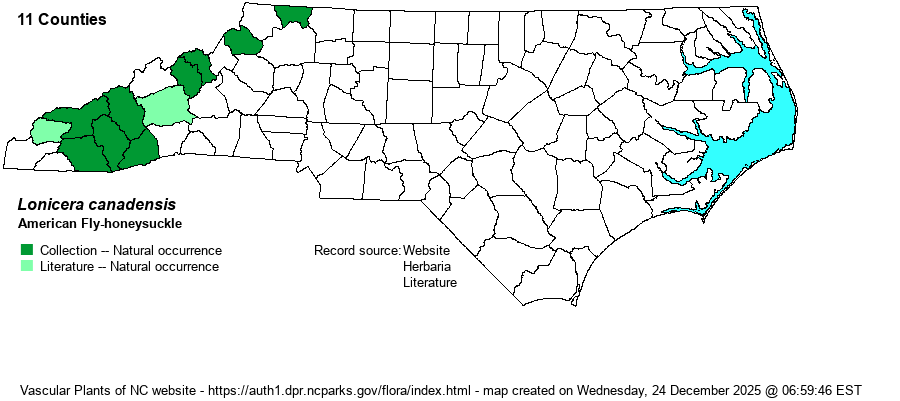| Author | Bartram ex Marshall | |
| Distribution | Strictly in the Mountains, occurring from the VA border nearly to the southwestern corner, but no records known for several counties.
This is a Northern species that ranges over southern Canada south to PA and MN, and then south in the Appalachians to extreme northern GA.
| |
| Abundance | Rare. The species is designated as Significantly Rare by the NC NHP. | |
| Habitat | This species prefers wet or damp ground, but mainly in forested areas, including margins of bogs, swamps, and cool moist forests. It is occasionally found in upland forests, but mostly where moist/humid and in cool microhabitats. Because it is found mainly in middle and high elevations, such wet or damp habitats are rather scarce and localized. | |
| Phenology | Blooms in May and June; fruits in June and July. | |
| Identification | This is a fairly small deciduous shrub that grows to about 3 feet tall. It has opposite, ovate leaves with entire margins (but with a ciliate fringe) and a rounded tip, growing to about 2.5 inches long. This shrub has unusual twin/paired, dangling cream or pale yellow flowers that are trumpet-shaped. The fruits are red berries that are twinned/paired as well. Several exotic honeysuckle species also have ovate, opposite leaves with rounded tips, and thus you may need to see flowers or fruits for identification, unless its swampy habitat is used for identification. (No native shrubs should be confused with this species.) | |
| Taxonomic Comments | None
| |
| Other Common Name(s) | American Honeysuckle, Canadian Fly-honeysuckle | |
| State Rank | S2 | |
| Global Rank | G5 | |
| State Status | SR-P | |
| US Status | | |
| USACE-agcp | FACU link |
| USACE-emp | FACU link |

